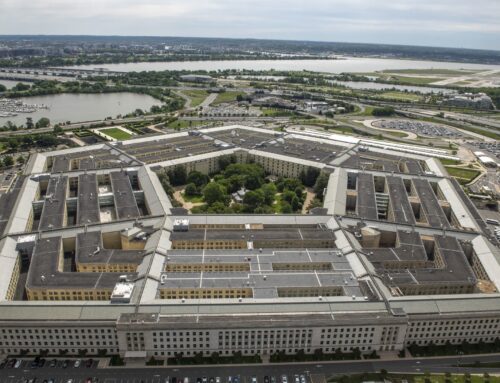Last year, The Department of Homeland Security (DHS) awarded the largest contract in its history. It calls for the development of a new “virtual borders” scheme to screen out would-be terrorists and criminals. Accenture, the developer, and its partners on the project have a decade, up to a $15 billion budget, and an unprecedented level of authority to design and implement the project.
The project, called US Visit, is intended to compare finger scans and digital photographs of every foreign visitor to the United States against criminal and terrorist watch lists
The DHS proposal is big on rhetoric, but short on details. DHS has yet to establish specific contract requirements for the program, and ultimately, Accenture will be left to write many of the program's requirements for themselves. This contract can be likened to a man who enters an auto dealership, writes a blank check, and tells the dealer to make him a car for “work.”
A report from the DHS inspector general raised significant concerns regarding the exemption of individuals coming in from Canada and Mexico. The report also pointed to potential time delay problems. It found that if there were just a 20 second increase over the parameters set down by DHS in the time it takes to inspect one vehicle, an extra 2.22 calendar years would be required to inspect every vehicle.
The general contract also faces significant technological hurdles. Studies conducted by the U.S. Army and the Government Accountability Office (GAO) concluded that facial biometric data could only be accurate in controlled environments. The computers can only identify facial characteristics when the digital picture on file and the digital picture taken on site are clear. Unfortunately, most terrorists aren't exactly lining up to have their digital picture taken by U.S. officials. Grainy or blurry images are often the only ones available, and such low quality photos are insufficient to clearly identify terrorists via these means. The GAO listed dozens of other technical obstacles that stand in the way of US Visit being effective.
Even if the system could effectively identify subjects on a watch list, it is unlikely that terrorists will enter the country through standard channels. Most of America's illegal aliens do not enter via legitimate ports and terminals but rather sneak across the border. The GAO reports that as much as 60% of unauthorized entries into the United States occur between border points.
Assuming that quality information can be collected, the information must be stored somewhere. The existence of a database containing the biometric information of hundreds of millions of people raises certain privacy issues.
Beyond the cost of creating and implementing the second phase of US Visit's biometric program, it is vital that consideration be given to possible adverse effects it may have on US trade and tourism. Already, several lawmakers that represent border cities that would be impacted economically have asked the administration to delay the implementation of US Visit.
All of these problems need to be considered as DHS moves ahead with the program. The question we need to answer is whether there is a better way to spend the money. Politicians like billion dollar programs because their expense seems to demonstrate that they are getting tough on terror. But instead of blindly following an ideology of “the more we spend the safer we are”, we need to consider cheaper trade-offs that give us real security.











Get Social